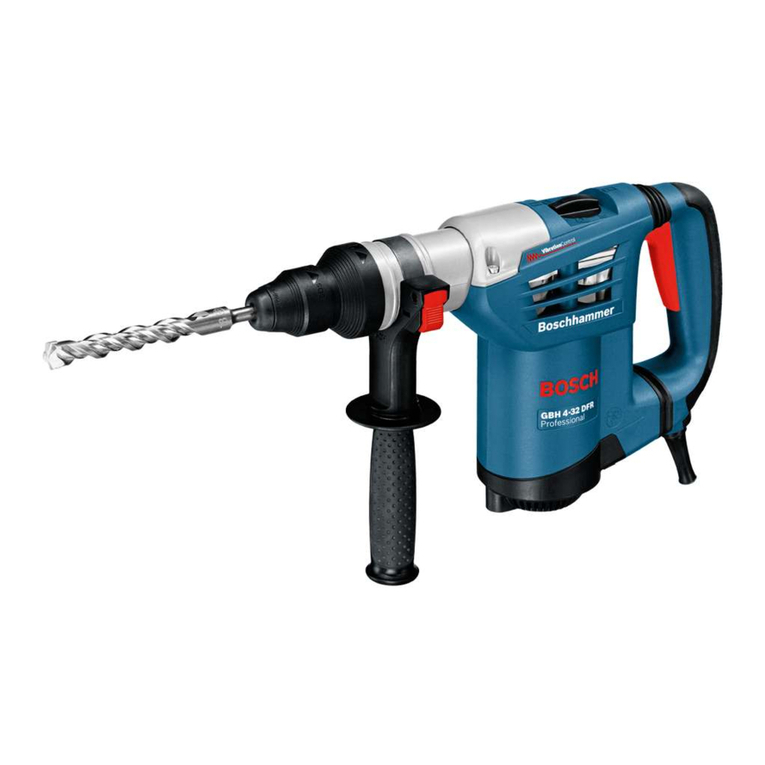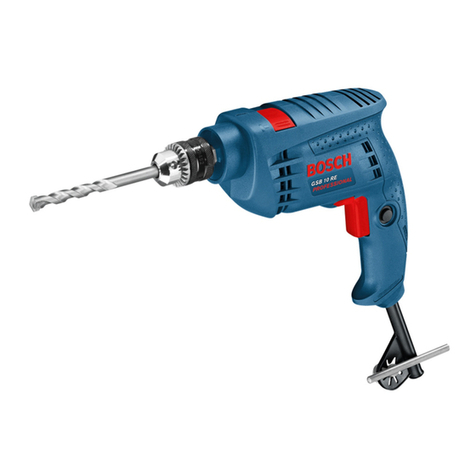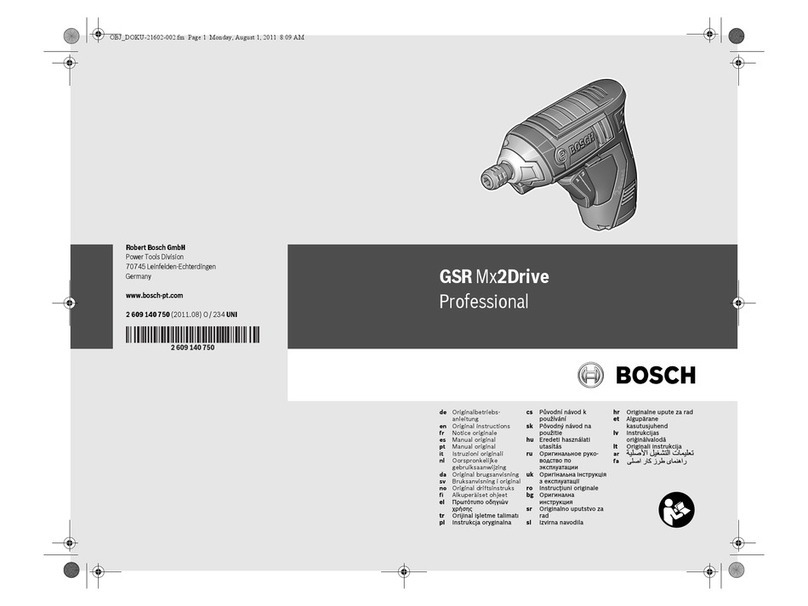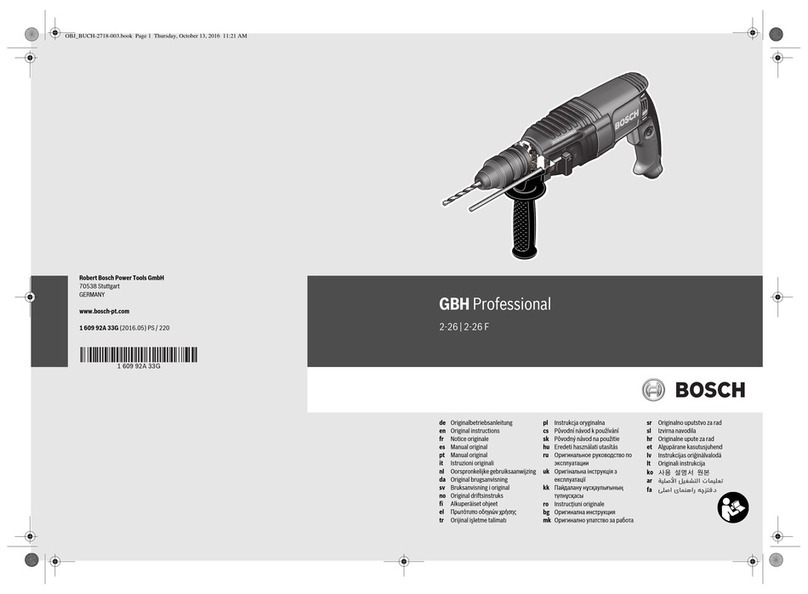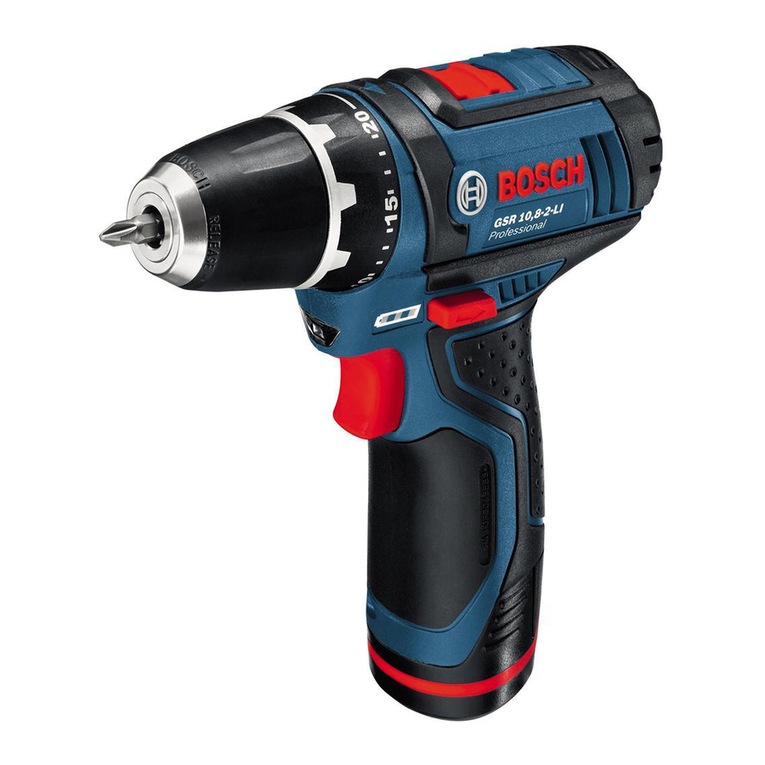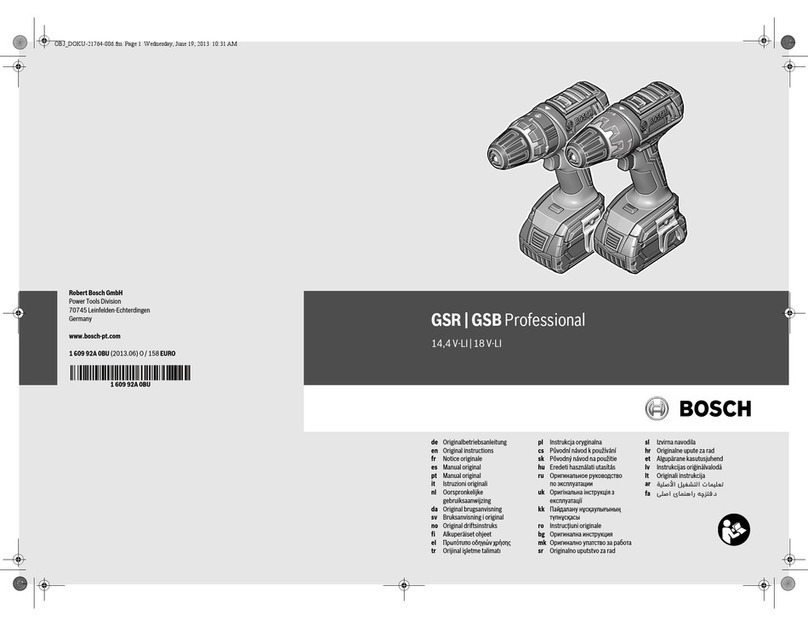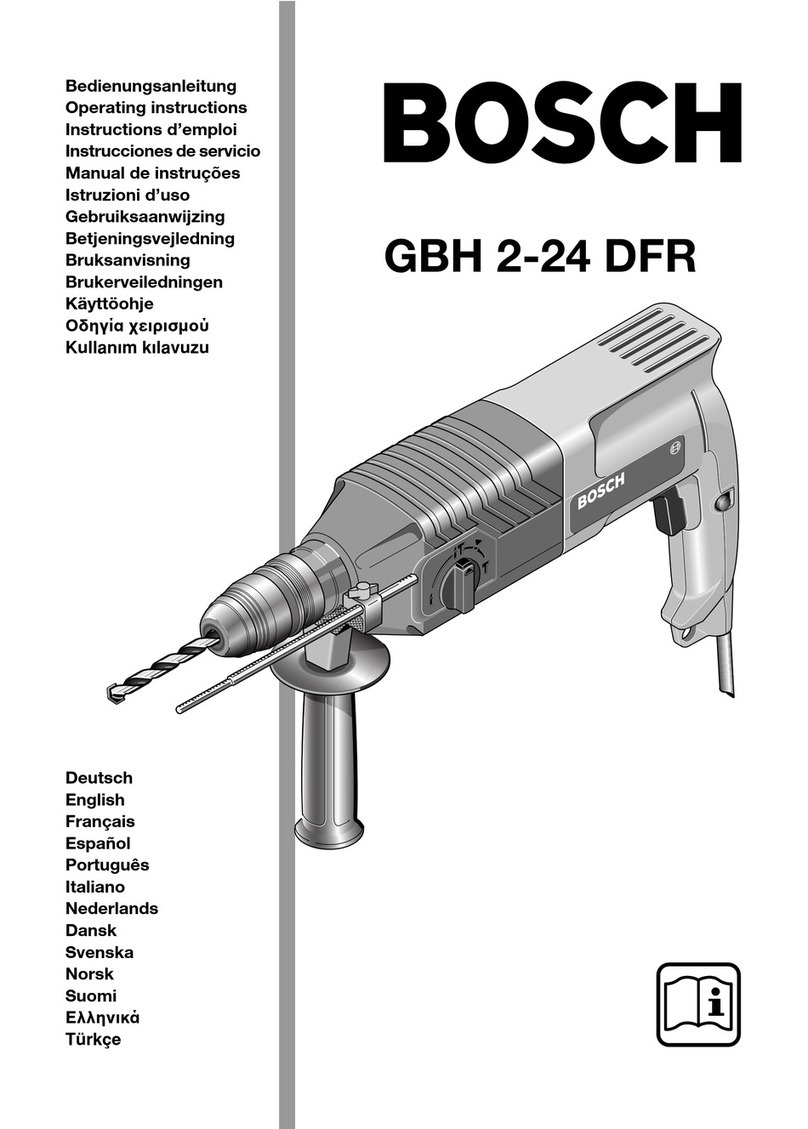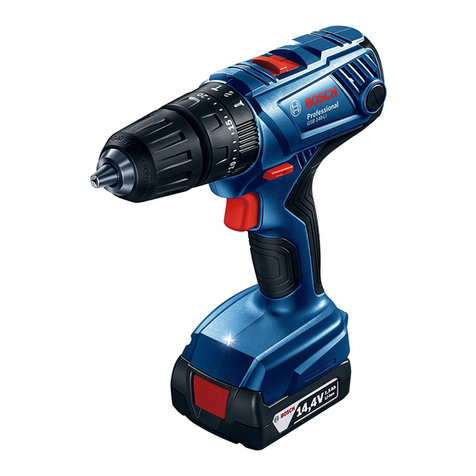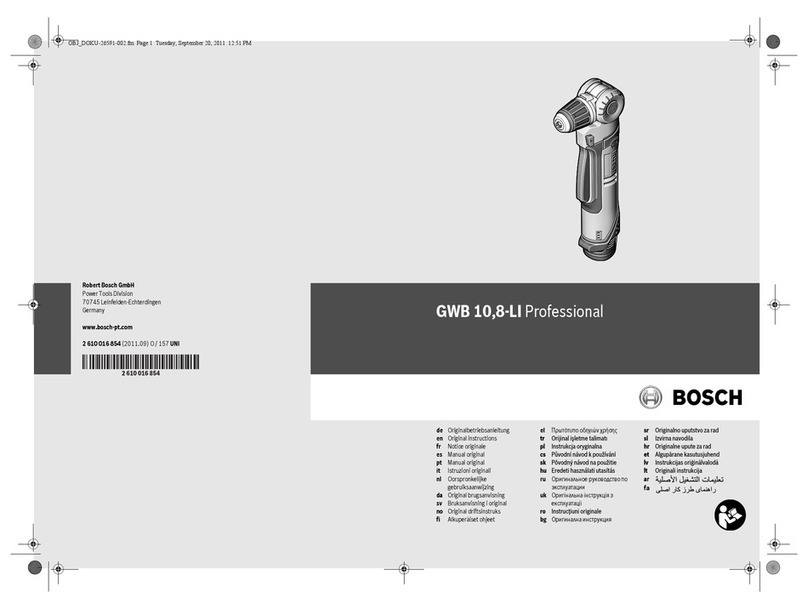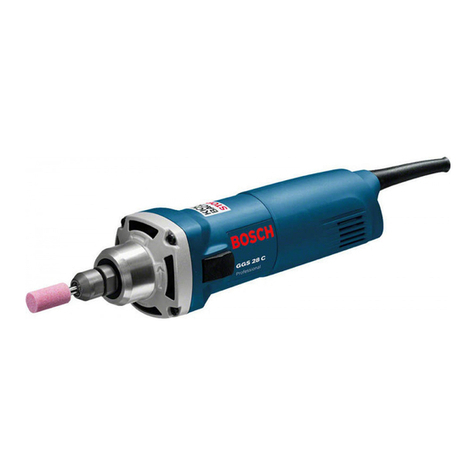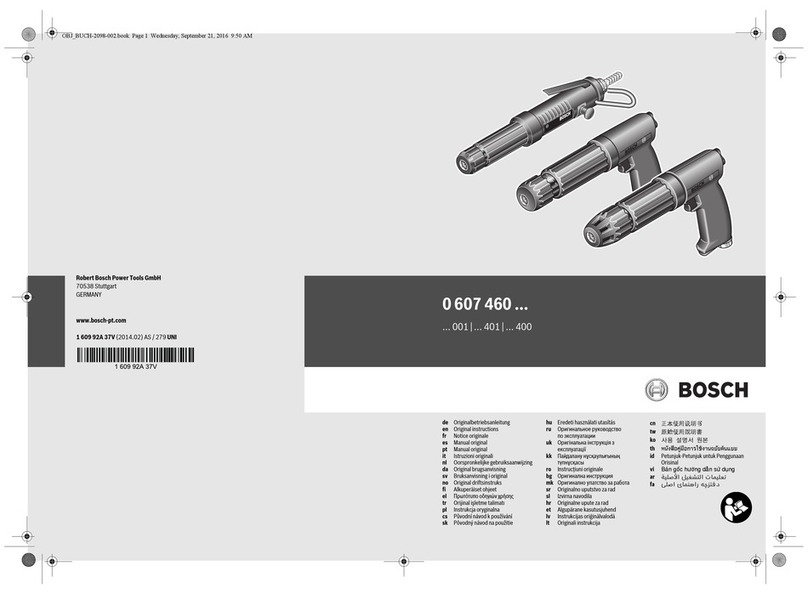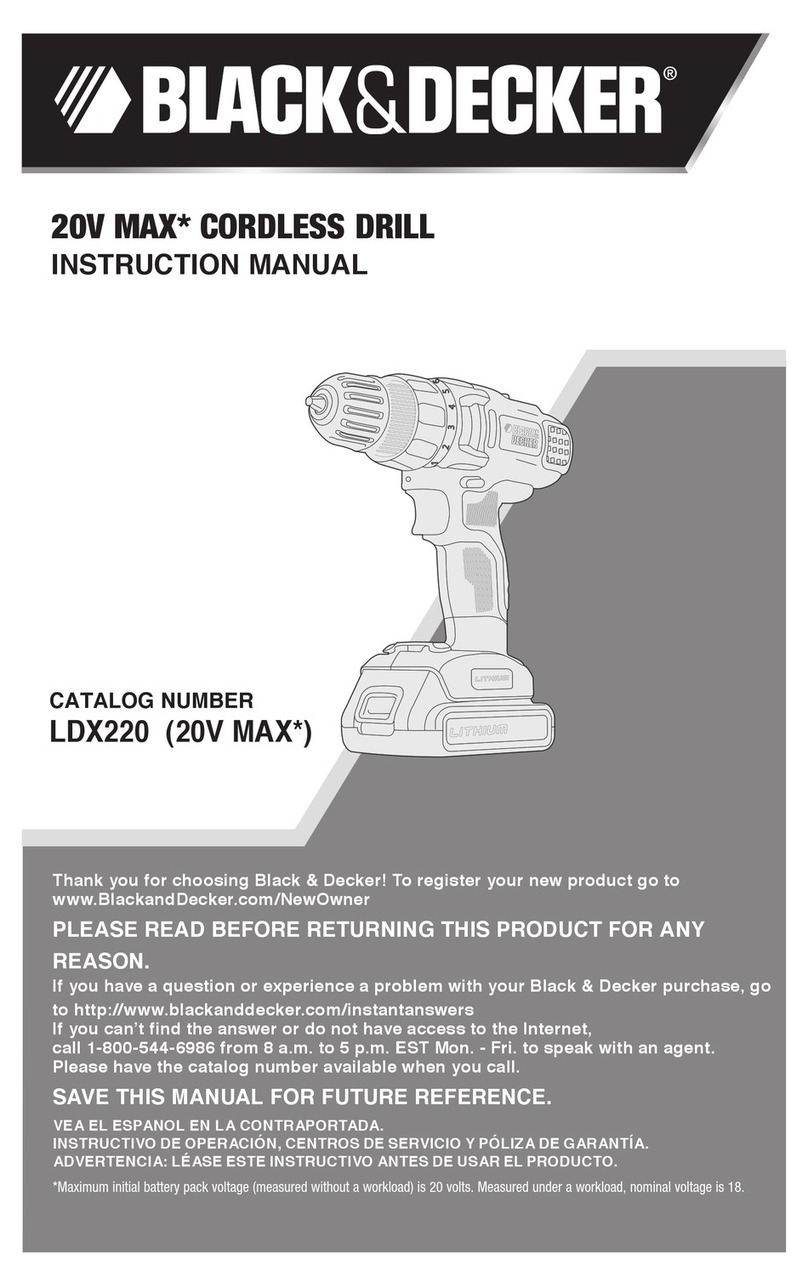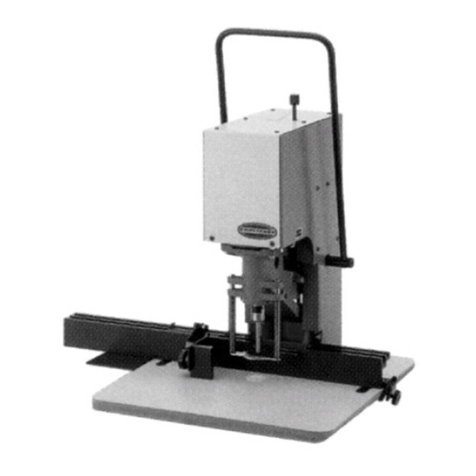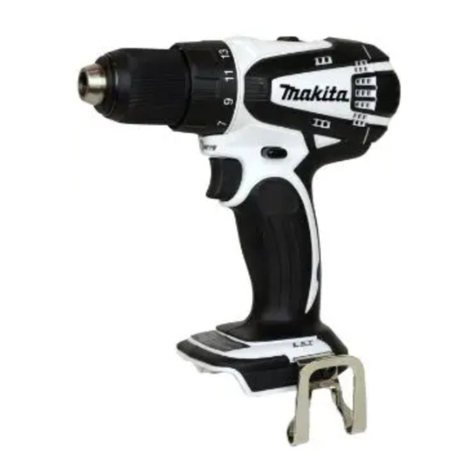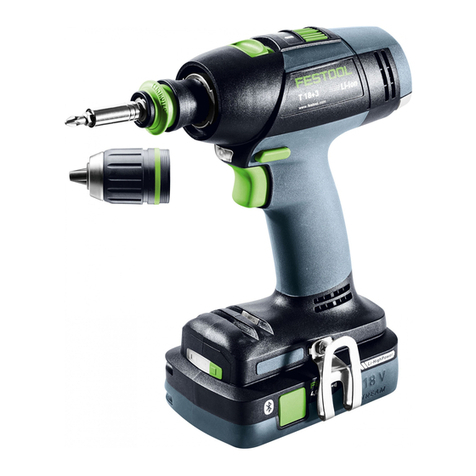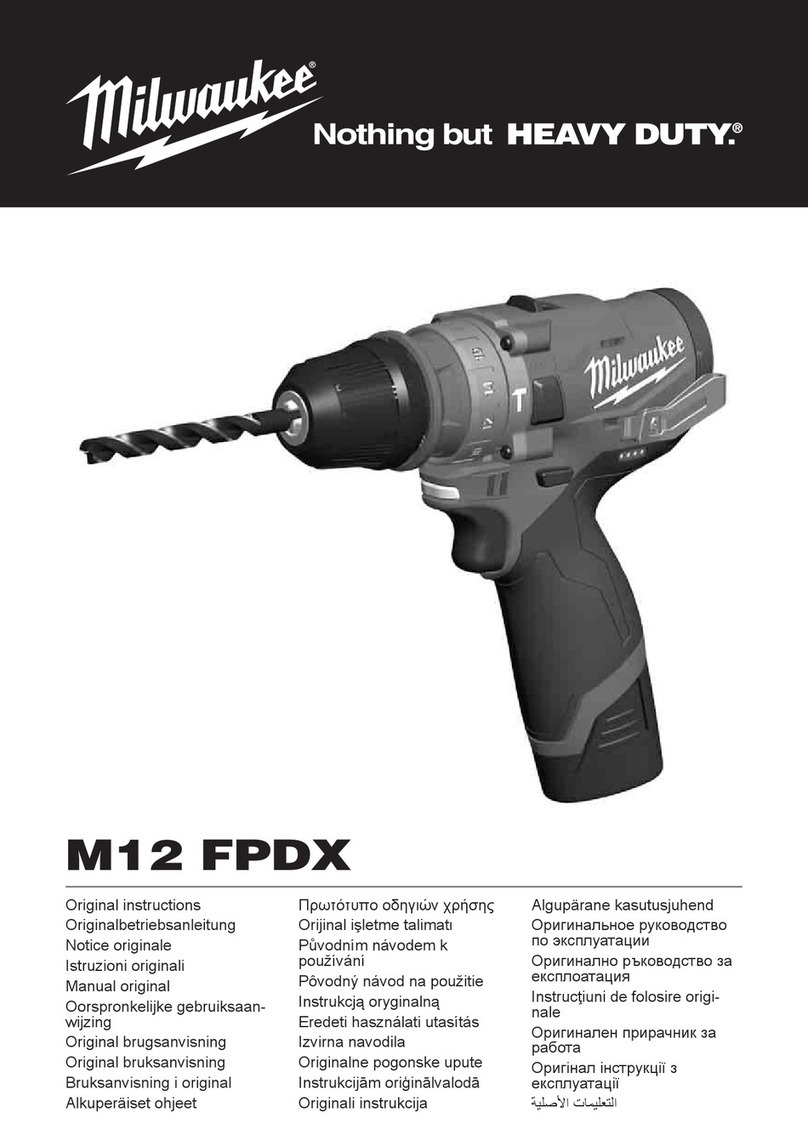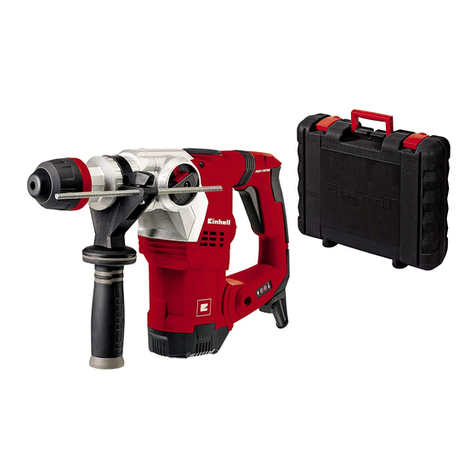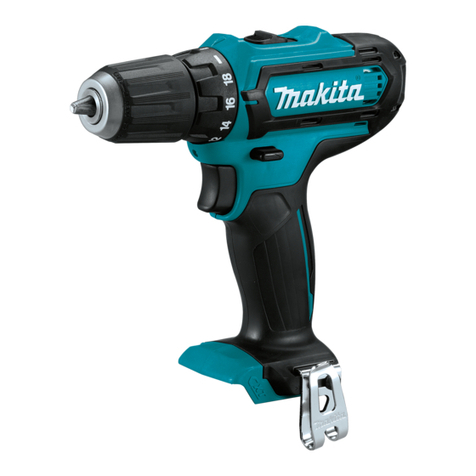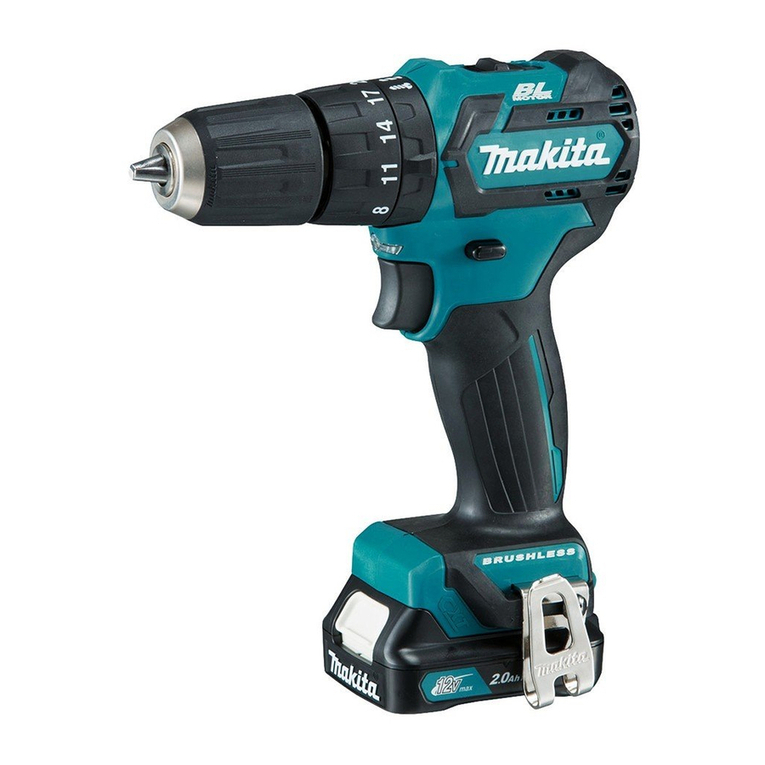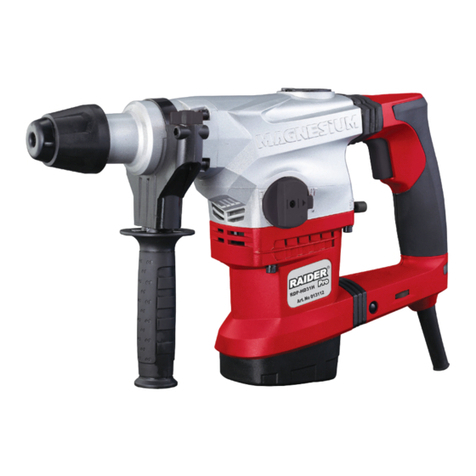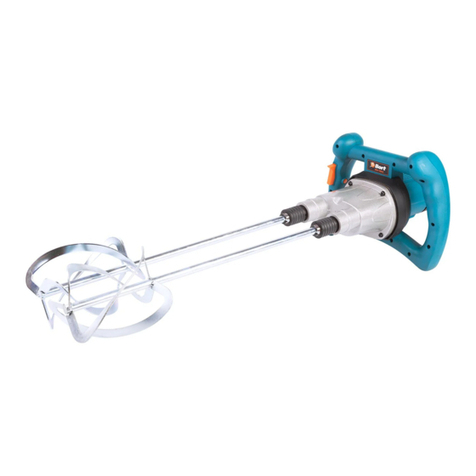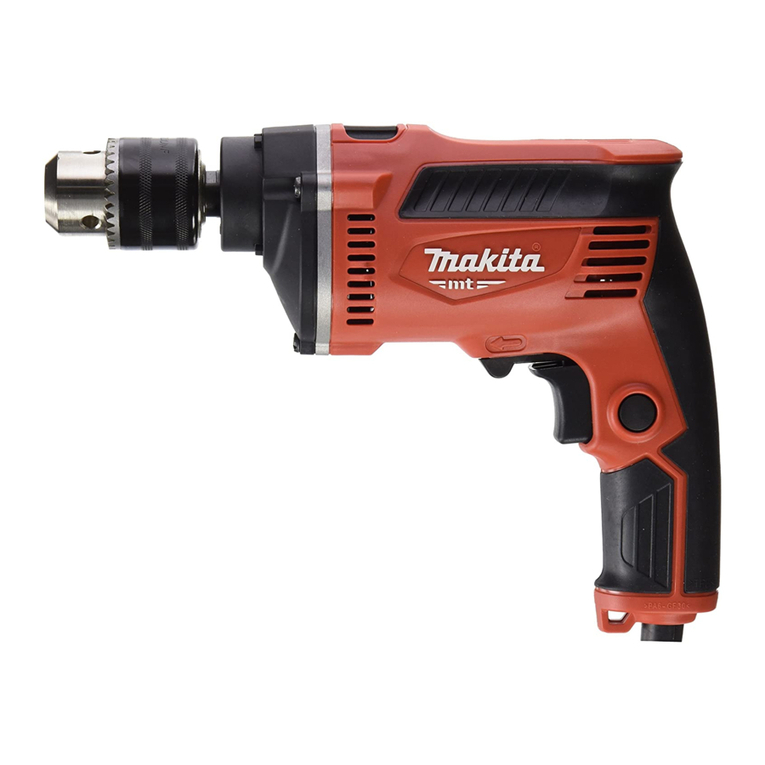
-3-
page headingGeneral Power Tool Safety Warnings
b. Use personal protective equipment. Always
wear eye protection. Protective equipment
such as a dust mask, non-skid safety shoes,
hard hat, or hearing protection used for ap-
propriate conditions will reduce personal
injuries.
c. Prevent unintentional starting. Ensure the
switch is in the off-position before connect-
ing to power source and / or battery pack,
picking up or carrying the tool. Carrying
power tools with your finger on the switch or
energizing power tools that have the switch
on invites accidents.
d. Remove any adjusting key or wrench before
turning the power tool on. A wrench or a key
left attached to a rotating part of the power
tool may result in personal injury.
e. Do not overreach. Keep proper footing and
balance at all times. This enables better
control of the power tool in unexpected situ-
ations.
f. Dress properly. Do not wear loose cloth-
ing or jewelry. Keep your hair and clothing
away from moving parts. Loose clothes,
jewelry or long hair can be caught in moving
parts.
g. If devices are provided for the connection
of dust extraction and collection facilities,
ensure these are connected and properly
used. Use of dust collection can reduce
dust-related hazards.
h. Do not let familiarity gained from frequent
use of tools allow you to become compla-
cent and ignore tool safety principles. A
careless action can cause severe injury with-
in a fraction of a second.
4. Power tool use and care
a. Do not force the power tool. Use the cor-
rect power tool for your application. The
correct power tool will do the job better and
safer at the rate for which it was designed.
b. Do not use the power tool if the switch
does not turn it on and off. Any power tool
that cannot be controlled with the switch is
dangerous and must be repaired.
c. Disconnect the plug from the power source
and/or remove the battery pack, if detach-
able, from the power tool before making
any adjustments, changing accessories, or
storing power tools. Such preventive safe-
ty measures reduce the risk of starting the
power tool accidentally.
d. Store idle power tools out of the reach of
children and do not allow persons unfamil-
iar with the power tool or these instructions
to operate the power tool. Power tools are
dangerous in the hands of untrained users.
e. Maintain power tools and accessories.
Check for misalignment or binding of mov-
ing parts, breakage of parts and any other
condition that may affect the power tool’s
operation. If damaged, have the power tool
repaired before use. Many accidents are
caused by poorly maintained power tools.
f. Keep cutting tools sharp and clean. Prop-
erly maintained cutting tools with sharp
cutting edges are less likely to bind and are
easier to control.
g. Use the power tool, accessories and tool
bits etc. in accordance with these instruc-
tions, taking into account the working con-
ditions and the work to be performed. Use
of the power tool for operations different
from those intended could result in a haz-
ardous situation.
h. Keep handles and grasping surfaces dry,
clean and free from oil and grease. Slippery
handles and grasping surfaces do not allow
for safe handling and control of the tool in
unexpected situations.
5. Battery tool use and care
a. Recharge only with the charger specified
by the manufacturer. A charger that is suit-
able for one type of battery pack may create
a risk of fire when used with another battery
pack.
b. Use power tools only with specifically des-
ignated battery packs. Use of any other bat-
tery packs may create a risk of injury and fire.
c. When battery pack is not in use, keep it
away from other metal objects like paper
clips, coins, keys, nails, screws, or other
small metal objects that can make a con-
nection from one terminal to another.
Shorting the battery terminals together may
cause burns or a fire.
2610070434 GBH18V-40C 202205.indd 3 6/6/22 8:58 AM



